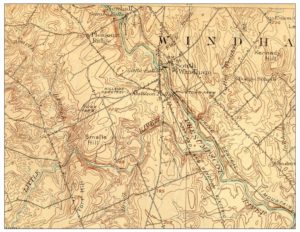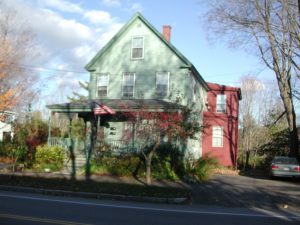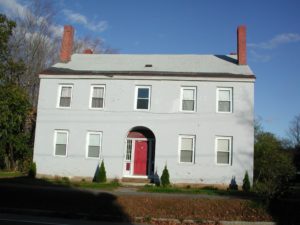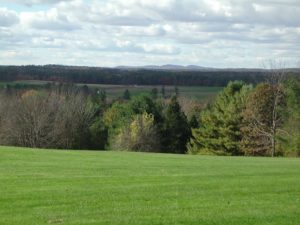 |
| The view of North Gorham from Fort Hill |
When I was in trade school one of my instructors brought us here – to Fort Hill in Gorham, Maine – on a field trip to study proper subdivision design. He told us farming is the past and subdivisions are the future, so in another 20 years all of this will be developed. Nearly 10 years later there is still open space, but there has been a lot of development in Gorham over the past 10 years. Who knows what will happen over the next 10 years?
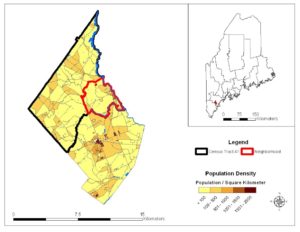 |
| Source: Maine Office of GIS |
The town of Gorham is located in Southern Maine, about a half hour outside of Portland.
The close proximity to Portland, combined with views like this, are what attract people to Gorham today.
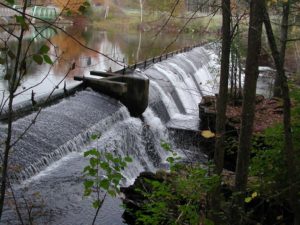 |
| Gambo Falls |
In the early days people in Gorham settled around the many water power sites on the Presumpscot River.
 |
| Remnants of an old mill building at the Oriental Powder Company site |
The many small scale mills built on the Presumpscot…
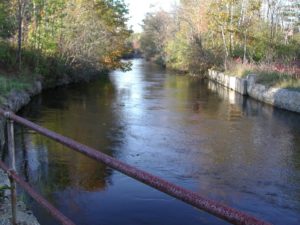 |
| A section of the Cumberland & Oxford Canal, now part of the Mallison Falls Hydroelectric Project |
were connected by the Cumberland and Oxford Canal.
 |
| View of South Windham from Canal Street, Gorham |
Rural villages grew up around these mills
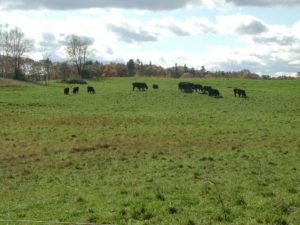 |
| Cow pasture on Huston Road |
and the surrounding countryside provided food for the village.
 |
| Dairy farm in North Gorham |
Today farming has become very mechanized and requires a lot of land. The pressure to get big or get out has forced many small family farms to turn to alternative sources of income.
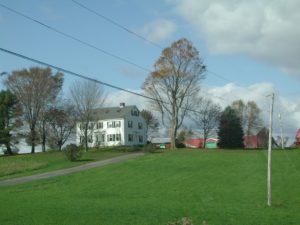 |
| Bennett Enterprises, Inc. – Bennett All Weather Paintball |
Like this dairy farm, turned disc golf course,
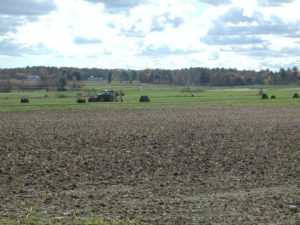 |
| Daigle Family Trust, Sebago Lake Road |
This sod farm,
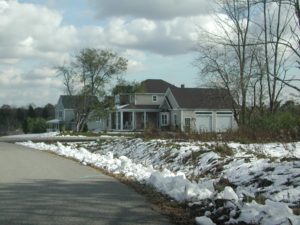 |
| Harding Bridge Farm Subdivision |
or this subdivision farm.
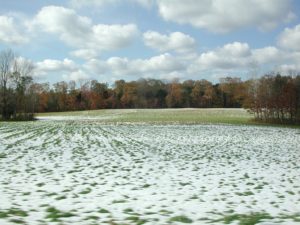 |
| Harding Bridge Farm |
At least the farmland is still there.
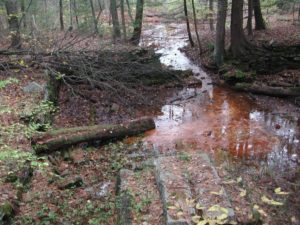 |
| Remnants of an old mill building at the Oriental Powder Company site |
While the small scale mills
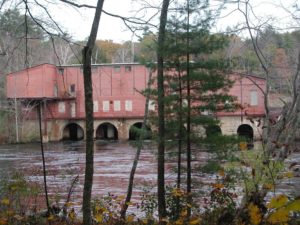 |
| Gambo Falls Powerhouse |
Have been replaced with large scale hydroelectric dams
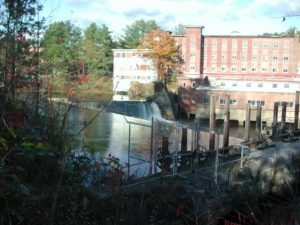 |
| Mallison Falls Hydroelectric Project |
And industrial factories – now Portland Safe Consulting-Design,
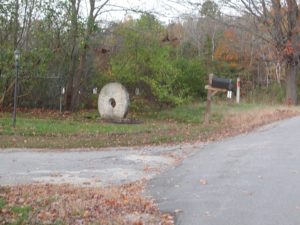 |
| Millstone in a residential yard in Newhall Village, Windham, near Gambo Falls |
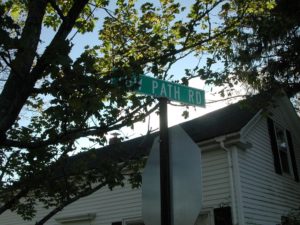 |
| Tow Path Road – a reminder of the days when Little Falls was a major stop on the C&O Canal |
You can still find relics from the past that remind us of the way life used to be in Gorham.
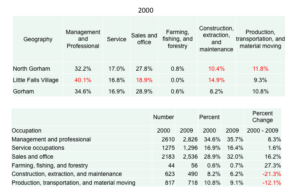 |
| Source: US Census 2000 and ACS 2009 5 Year Sample Data |
Today, the reality is traditional rural industries, such as farming, forestry, or mining, have been mechanized and employ a very small percentage of the town’s population. Most of the population works in service occupations, such as retail, professional, or management.
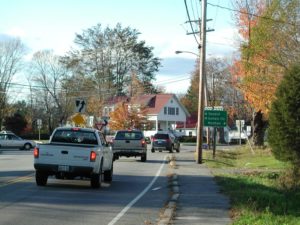 |
| Rush hour traffic at the Little Falls rotary |
Most of the people who live in Gorham actually commute to work in another town.
 |
|
| Source: US Census 2000 |
|
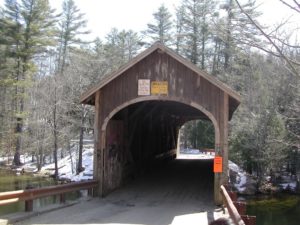 |
| Babb’s Bridge, in Northeast Gorham, is another reminder of the way things used to be |
This part of North Gorham is still very rural – there is a maple syrup farm nearby. A recent study identified the Presumpscot River watershed as the most vulnerable to development pressures in the Northeastern US. Right now there is a lot of land for sale near this bridge. The future of this land is uncertain.
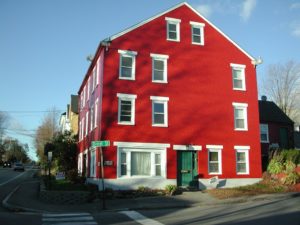 |
| Apartments for rent on Depot Street, South Windham |
Why develop rural land further outside of the employment centers when there is housing available in the Little Falls village center?
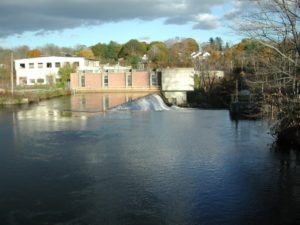 |
| Little Falls Dam with the Keddy Mill Site in the background |
At one time this village was a vibrant manufacturing center
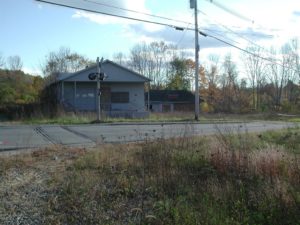 |
| The South Windham Train Station |
With a train station on the Mountain Division Railroad, which used to travel daily from Portland to Fryeburg.
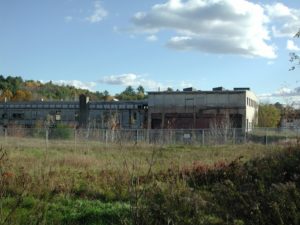 |
| The Keddy Mill Site |
Gorham and Windham have joined efforts to revitalize this village, but progress has been slow due to the economic downturn.
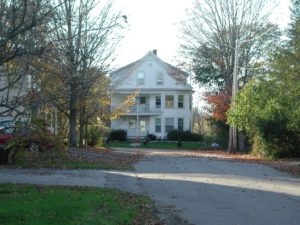 |
| Pleasant Street, Little Falls |
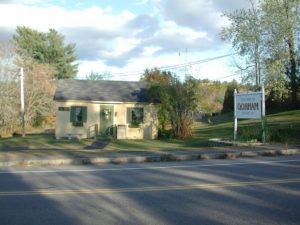 |
| Little Falls Library |
Nevertheless, Little Falls is still a very charming village
With lots of classic New England architecture.
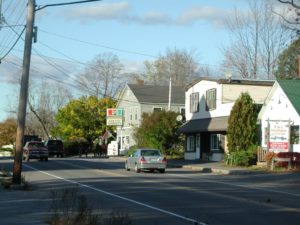 |
| Sawyer’s Variety on Route 202 |
There is a significant amount of traffic that flows through this village everyday as people commute to Portland.
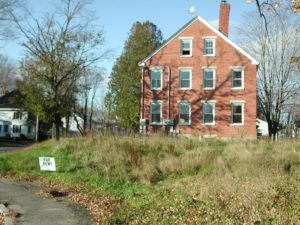 |
| Brick Colonial for Rent at the Little Falls rotary |
Traffic, among other things, may explain the higher than average vacancy rate in this part of Gorham.
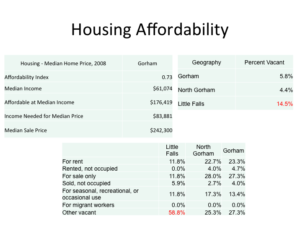 |
| Source: Maine State Planning Office, US Census 2010 and ACS 2010 3 Year Survey Data |
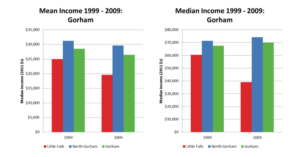 |
| US Census 2000 and 2009 ACS 5 Year Survey Data |
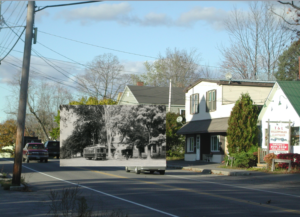 |
| Source: Willis (1986). The way it was in Gorham. Saco, ME. Saco Printing Co., Inc. |
Ironically, 100 years ago this village used to be connected to Westbrook and Portland via the Portland and Windham Electric Railroad. If they could bring this back today it might solve some of the traffic problems.
This map shows Gorham in 1916. Observe the trolley line, and also the Town Farm on Huston Road, just outside of Little Falls Village. On the other side of the Presumpscot was the Windham Town Farm. Today there is a prison located on what used to be the Windham Town Farm, and the Gorham Public Works Department and two closed landfills are located on what used to be the Gorham Town Farm.
 |
| Intersection of Huston Road and Route 202 in Little Falls |
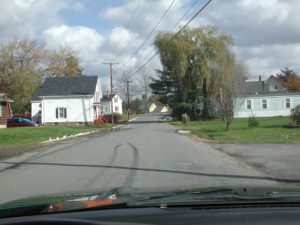 |
| Village Residential zone on Huston Road |
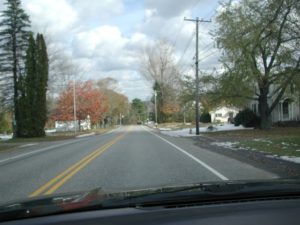 |
| Suburban residential zone on Huston Road near Hillside Cemetery |
The trolley also used to run up Huston Road, towards the cemetery.
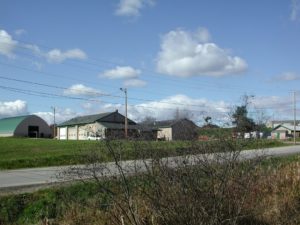 |
| Gorham Public Works on Huston Road |
Just a little further up the road is the Gorham Public Works Facility.
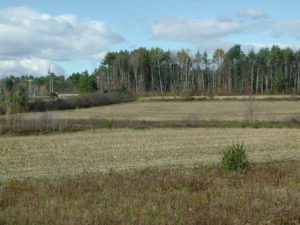 |
| Daigle Family Trust Corn Field Adjacent to Gorham Public Works |
Next to this corn field. Off in the distance you can see one of the closed landfills, a recent source of controversy in the town. Currently the town is moving forward with a plan to reopen this landfill in order to dispose of a debris pile. Many residents in the neighborhood are rightfully upset over this plan. The following is a selected (paraphrased) list of public concerns raised at a recent public hearing about this issue.
- “The Huston Road property was donated to the town to help the poor. The town has forgotten their obligation.”
- “The Huston Road property should be a community garden, not a landfill.”
- “Since I found out about this plan I have become a nervous wreck.”
- “When I bought my property I was told this landfill was closed. If it is truly ‘closed’ why can the town reopen it now, and what guarantee do we have that it wont be reopened at some point in the future?”
To paraphrase the town’s response to the last question – There are no guarantees. We are reopening this landfill because it is in the best interest of the town. If, in the future, another situation arises where we need to reopen this landfill because it is in the best interest of the town, then we will do so. After all, this site is a landfill. It’s not as if we are proposing to dump this trash in the Great Falls Elementary School.
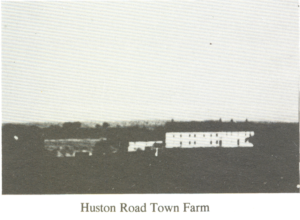 |
| Source: Willis (1986). The way it was in Gorham. Saco, ME. Saco Printing Co., Inc. |
The great irony is this land was originally left to the town for the purpose of alleviating poverty in Gorham.
“At the death of Mrs. Huston the town gave a note to itself, for the value of the farm, for the sum of three thousand eight hundred and nine dollars and seventy-five cents. This note constitutes what is known as the “Huston Fund,” the semi-annual interest of which, at six per cent, is applied to aid worthy and deserving poor, according to the terms of Mr. Huston’s will. The town provides its farm with tools and stock, and hires a Superintendent to cultivate it, and to take charge of those of its poor who are placed there. In 1874 this Huston farm more than supported the poor of the town.”
– Page 301, History of Gorham, Maine, by Hugh Davis McLellan
The landfills were opened in 1984. The municipal solid waste landfill was closed in 1986 because it is leaking. The construction and demolition debris (CDD) landfill was closed in 1996, but there is no evidence to suggest this landfill is leaking. The town is moving forward with a plan to dump more trash on what used to be the town farm.
As a resident of Gorham I understand why the town council voted the way they did on this issue, but I know I would not be willing to accept their decision if I lived near the Huston Road landfill. Although the idea of turning a closed landfill into a community garden or park may sound like a bad or poorly thought out idea, it has been done in other places. If this closed landfill was converted to a use that would provide a benefit to people in the community (instead of just being a “closed” landfill), then perhaps the town would be more reluctant to reopen this closed landfill in the future.
Here are some ideas:
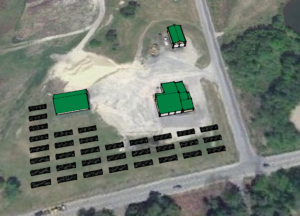 |
| What if the Public Works Department made more efficient use of their land? |
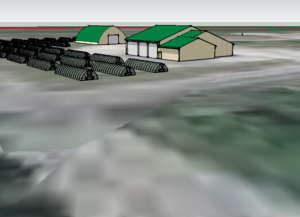 |
| By Adding these hoop-houses |
 |
| They could be used by people in the community to grow food |
This was just a preliminary idea. Perhaps it would be better to locate these hoop houses on the closed landfills instead. More to come…

































